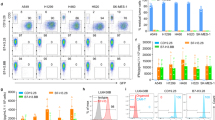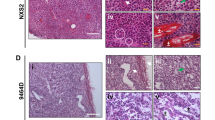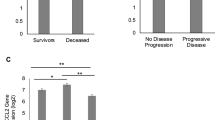Abstract
The neural cell adhesion molecule (NCAM) is highly expressed on the surface of small-cell-lung cancer (SCLC) cells. We have produced a monoclonal antibody, NY3D11, that binds to NCAM to investigate whether this antigen could be used to develop antibody-directed therapy for SCLC. 125I-labelled IgG and F(ab')2 fragments of NY3D11 localized selectively in human SCLC xenografts grown in nude mice. The human biodistribution of 131I-labelled NY3D11 after intravenous administration was investigated by gamma-camera imaging in six patients with SCLC. Three patients received IgG and three received F(ab')2. No evidence of localization to primary tumours or metastases was seen and antibody accumulated rapidly in the liver and bone marrow. The probable explanation for this distribution is that NY3D11 reacted with soluble NCAM or natural killer cells that possess the CD56 (NCAM) antigen.
This is a preview of subscription content, access via your institution
Access options
Subscribe to this journal
Receive 24 print issues and online access
$259.00 per year
only $10.79 per issue
Buy this article
- Purchase on Springer Link
- Instant access to full article PDF
Prices may be subject to local taxes which are calculated during checkout
Similar content being viewed by others
Author information
Authors and Affiliations
Rights and permissions
About this article
Cite this article
Ornadel, D., Ledermann, J., Eagle, K. et al. Biodistribution of a radiolabelled monoclonal antibody NY3D11 recognizing the neural cell adhesion molecule in tumour xenografts and patients with small-cell lung cancer. Br J Cancer 77, 103–109 (1998). https://doi.org/10.1038/bjc.1998.16
Issue Date:
DOI: https://doi.org/10.1038/bjc.1998.16



